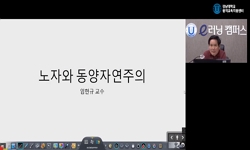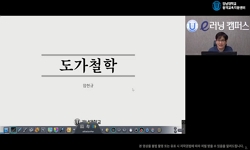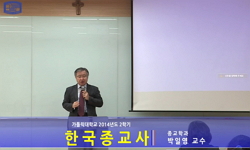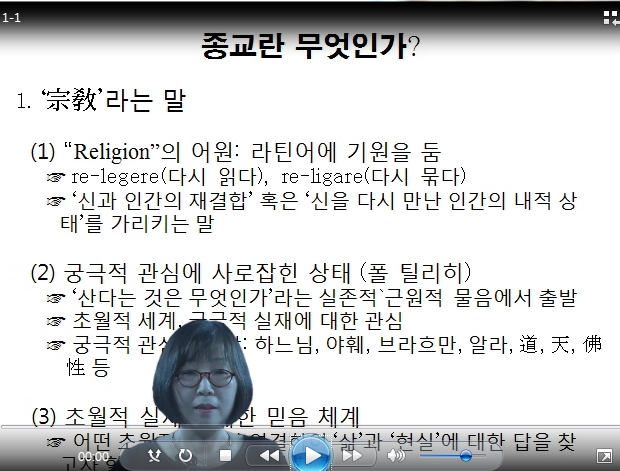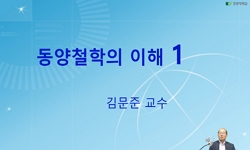고대 일본에서는 8~9세기 유적을 중심으로 토기에 사람의 얼굴을 그린 토기(人面墨書土器)가 다수 출토되었다. 소월리 유적에서 출토된 얼굴 장식옹의 의미에 대해 생각하는 참고로 일본의 ...
http://chineseinput.net/에서 pinyin(병음)방식으로 중국어를 변환할 수 있습니다.
변환된 중국어를 복사하여 사용하시면 됩니다.
- 中文 을 입력하시려면 zhongwen을 입력하시고 space를누르시면됩니다.
- 北京 을 입력하시려면 beijing을 입력하시고 space를 누르시면 됩니다.
https://www.riss.kr/link?id=A107902284
- 저자
- 발행기관
- 학술지명
- 권호사항
-
발행연도
2021
-
작성언어
Japanese
-
주제어
소월리 유적 ; 인면 묵서 토기 ; 역병의 신 ; 도교 ; 所月里遺跡 ; 人面墨書土器 ; 疫病の神 ; 道? ; Sowolri Site ; Ink-painted Human Face Pots ; Epidemic God ; Taoism
-
등재정보
KCI등재
-
자료형태
학술저널
-
수록면
301-315(15쪽)
-
KCI 피인용횟수
0
- DOI식별코드
- 제공처
- 소장기관
-
0
상세조회 -
0
다운로드
부가정보
국문 초록 (Abstract)
고대 일본에서는 8~9세기 유적을 중심으로 토기에 사람의 얼굴을 그린 토기(人面墨書土器)가 다수 출토되었다. 소월리 유적에서 출토된 얼굴 장식옹의 의미에 대해 생각하는 참고로 일본의 고대 유적에서 출토된 인면 묵서 토기에 대해 기존 연구를 소개하고자 한다.
먼저 출토 유적의 특징으로는 수도의 유적과 지방의 관청 유적에서 출토된다는 점을 들 수 있다. 이는 수도나 지방의 관청을 역병으로부터 보호하기 위해 그 네 구석이나 경계 부근에서 거행된 제사와 관련되는 것으로 생각된다.
수도나 지방 관아 외에는 취락에서 출토된 사례도 있다. 東일본에 존재하는 취락 유적의 경우 인면 묵서와 함께 개인명이나 그 본관지가 기록되어 있는 사례가 있는데, 이는 개인의 연명 기원을 위한 제사에서 이용되었을 가능성을 말해 준다.
다음으로 인면 묵서를 그리는 방법의 특징을 살펴보면, 그 대부분은 토기 측면에 正方向으로 그려져 있다. 또한 토기의 측면을 둘러싸듯 인면을 여러 개 그린 경우가 많다. 이는 정방향으로 놓인 인면 묵서 토기에 술과 음식 등을 담아 역병의 신에게 바쳤다는 것이나 어느 방향에서도 인면이 볼 수 있도록 고안하여 그렸음을 말해 준다.
그려져 있는 인면은 수염을 기른 남성이 많은데, 이는 도교(Taoism) 기호적 회화의 영향을 받았을 가능성이 높다. 경계 밖에서 몰려오는 역병의 신을 쫓아내기 위해 식사를 올리면서 그때 인면 묵서 토기가 사용되었던 것이다.
이상을 토대로 경산시 소월리 유적의 인면 장식옹과의 비교를 시도해 보면 공통점으로는 토기의 측면에 인면을 표현하였다는 점이나 어느 방향에서도 인면을 확인할 수 있도록 제작되었다는 점이 일본의 인면 묵서 토기의 특징과 유사하다.
결정적인 차이는 소월리에서 출토된 인면 장식옹은 미리 인면 장식을 한 후에 燒成된 반면, 일본 고대의 인민 묵서 토기는 소성 후의 토기에 墨으로 인면을 그렸다는 점이다. 이러한 점으로 미루어 볼 때 일본 고대의 인면 묵서 토기와의 관계성에 대해서는 더욱 신중한 검토가 필요하다.
다국어 초록 (Multilingual Abstract)
The finds unearthed at the Sowol-ri 所月里 site in Gyeongsan 慶山, Korea, include, in addition to wooden documents, a pot decorated with human faces on three sides. Until now, only a few examples of pottery with human faces have been found in Kor...
The finds unearthed at the Sowol-ri 所月里 site in Gyeongsan 慶山, Korea, include, in addition to wooden documents, a pot decorated with human faces on three sides. Until now, only a few examples of pottery with human faces have been found in Korea; thus, the discovery of pottery with no practical use may be significant for consideration on the nature of this site.
In Japan, many pots with human faces painted in ink have been unearthed, mostly at sites dating from the eighth to ninth centuries. As reference for the consideration of the meaning of the Sowol-ri pot, I wish to provide an overview of the literature on ink-painted human face pots that have been unearthed at ancient sites in Japan.
First, a distinctive feature of these sites is that many of them are the sites of former capitals or regional government offices. The pots probably have connections with religious rites that were performed at the four corners of such sites or near their boundaries in order to protect the capital or the regional government office from an epidemic.
Apart from capital cities and regional government offices, there are also examples of pots that have been unearthed at the sites of former settlements. Sites of eastern Japan also provide instances in which an individual’s name and place of living had been inscribed together with the ink painting of the human face. This suggests that such pots may have been used in religious rites to pray for the prolongation of the person’s life.
In addition, there are characteristic features regarding the way the faces are painted. Faces are mostly painted frontally and the same face is often painted several times around the sides of the pot. These characteristics show that these pots, which were placed with the human face on the front and filled with wine or food, were offerings to the epidemic god, and that they were made in a way to ensure that the human face could be seen from any direction.
The human faces often represent bearded males, and it is very likely that they were influenced by the symbolic paintings of Taoism. Meals were offered in order to ward off the epidemic god who came from outside the limits of the locality in question. Ink-painted human face pots were used on such occasions.
The comparison between these Japanese pots and the pot adorned with human faces from the Sowol-ri site shows great similarity in the depiction of the human faces on each side of the pot in such a way that the human face can seen from any direction. However, there is a determining difference in that the Sowol-ri pot was fired after the human faces had been added, whereas ancient Japanese pots were fired before the human faces were painted. Based on this fact, further investigations are needed to establish whether or not there are any connections between the Sowol-ri pot and the ancient Japanese pots.
참고문헌 (Reference)
1 巽淳一郎, "日本の美術361まじないの世界2歴史時代" 至文堂 1996
2 水野正好, "招福除災 ―その考古学―" 国立歴史民俗博物館 1985
3 金子裕之, "平城京と祭場" 国立歴史民俗博物館 1985
4 平川南, "墨書土器の研究" 吉川弘文館 2000
5 田中勝弘, "墨書人面土器について" 58 (58): 1973
6 高島英之, "古代出土文字資料の研究" 東京堂出版 2000
7 財団法人京都市埋蔵文化財研究所, "京都市埋蔵文化財研究所調査報告第17冊 水垂遺跡長岡京左京六·七条三坊" 1998
8 神奈川県地域史研究会, "シンポジウム 古代の祈り人面墨書土器からみた東国の祭祀 発表要旨·東国人面墨書土器集成" 2004
1 巽淳一郎, "日本の美術361まじないの世界2歴史時代" 至文堂 1996
2 水野正好, "招福除災 ―その考古学―" 国立歴史民俗博物館 1985
3 金子裕之, "平城京と祭場" 国立歴史民俗博物館 1985
4 平川南, "墨書土器の研究" 吉川弘文館 2000
5 田中勝弘, "墨書人面土器について" 58 (58): 1973
6 高島英之, "古代出土文字資料の研究" 東京堂出版 2000
7 財団法人京都市埋蔵文化財研究所, "京都市埋蔵文化財研究所調査報告第17冊 水垂遺跡長岡京左京六·七条三坊" 1998
8 神奈川県地域史研究会, "シンポジウム 古代の祈り人面墨書土器からみた東国の祭祀 発表要旨·東国人面墨書土器集成" 2004
동일학술지(권/호) 다른 논문
-
- 경북대학교 인문학술원
- 김상현(Kim Sang-Hyun)
- 2021
- KCI등재
-
- 경북대학교 인문학술원
- 홍승우(Hong, Sueng Woo)
- 2021
- KCI등재
-
- 경북대학교 인문학술원
- 이동주(Lee Dong-Joo)
- 2021
- KCI등재
-
경산 소월리 유적 출토 人面透刻土器와 목간의 기능 - 목간의 기능과 농경의례 -
- 경북대학교 인문학술원
- 이용현(Lee Yong Hyeon)
- 2021
- KCI등재
분석정보
인용정보 인용지수 설명보기
학술지 이력
| 연월일 | 이력구분 | 이력상세 | 등재구분 |
|---|---|---|---|
| 2023 | 평가예정 | 재인증평가 신청대상 (재인증) | |
| 2020-03-24 | 학회명변경 | 영문명 : Academy of Humanities, Kyungpook National University -> Institute of Humanities Studies, Kyungpook National University |  |
| 2020-01-01 | 평가 | 등재학술지 선정 (재인증) |  |
| 2018-01-01 | 평가 | 등재후보학술지 선정 (신규평가) |  |
| 2014-02-12 | 학회명변경 | 한글명 : 인문과학연구소 -> 인문학술원영문명 : Institute of Humanities Kyungpook National University -> Academy of Humanities, Kyungpook National University |





 DBpia
DBpia
